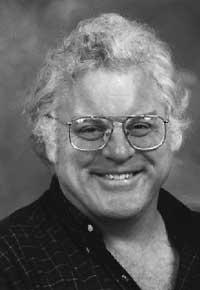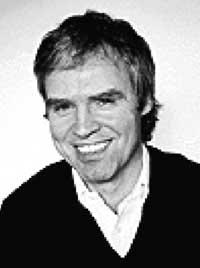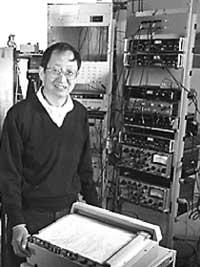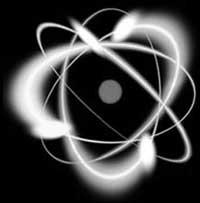Nobel Prize in Physics 1998 in the structure of matter
1998/12/01 Elhuyar Zientzia Iturria: Elhuyar aldizkaria

This year, as usual, the Nobel Prize in Physics awarded annually by the Royal Swedish Academy of Sciences has moved to the United States. And, as it happens in recent years, the winner is not the only one, since science and research are not an individual job, but a teamwork. The winners of this year are three: Robert. B. B. Laughlin, Horst L. Störmer and Daniel C. Tsui.
Finally, last year and as two years ago, the prize to Physics has been won by those who analyze the behavior of the matter at very low temperature. Three researchers have found that electrons, exposed to a magnetic field, can join, compacting and form new "particle types". The electric charge of these new particles is the fraction of the charge of electrons. In other words, a new collective behavior of electrons has been found, which has opened many new pathways of research.
The discovery occurred in an experiment carried out in 1982 by Störmer and Tsui in the magnetism laboratory of the Massachusetts Institute of Technology: using a very large magnetic field and a very low temperature (about tenths of degree above absolute zero), the electrons, compacted, believed that they formed a solid crystalline, but found values similar to those of the quantum effect Hall, that is to say, the new values of the converge.

These new values can be expressed with the same constants as before, but this time they can be multiplied by integers and fractional numbers (1/3, 2/3, 3/4...). For this reason, the new discovery was called a fractional quantum effect Hall. The discovery was a big surprise for the researchers, who lacked a theoretical model that explained how these new values could appear. In fact, according to this and against what until then was known, the minimum charge of the entities that generate electric current in the movement is not a (electric charge of the electron in vacuum), it can be less, as a third of the charge of the electron.
One year after the discovery, Rober B. Laughlin managed to explain theoretically the result of the trial, according to which under a large magnetic field and at very low temperature electrons are compacted forming a new type of quantum fluid. For this purpose (since the electrons cannot be compacted without more), the electrons are combined with the "so many flow" of the magnetic field, forming compactable composite particles (type boson). The types of quantum fluids have previously been observed at very low temperature in liquid helium and superconductors. Although all have common features like superfluence, their behavior is different.
The fluid proposed by Laughlin presents special characteristics. For example, it is incompressible. In addition, when an electron is added the fluid is excited and several "quasiparticles" are created. It is precisely these quasiparticles that have the fractional load necessary to explain the results of Störmer and Tsui. In subsequent measurements, new Hall conductance values have been found that have demonstrated Laughlin's theoretical model. The advances in the field of microelectronics, after the work of 1982-83 of these Nobel Prizes, have allowed to demonstrate indirectly the existence of cuasiparts and measure the fractional load, checking the findings of the three researchers.

Therefore, the discovery has meant an important step in the field of quantum physics, which has allowed us to lay the basis for developing new theoretical concepts in many branches of quantum physics. This is a basic research, which will not have immediate consequences, but scientists have already begun to see applications, to predict better.
The limits of the miniaturization process that was currently being seen on computers, mobile phones and many other areas of microelectronics could be broken as a result of this discovery, that is, the way has been opened for future electronic components to be even smaller than previously thought.

Gai honi buruzko eduki gehiago
Elhuyarrek garatutako teknologia





